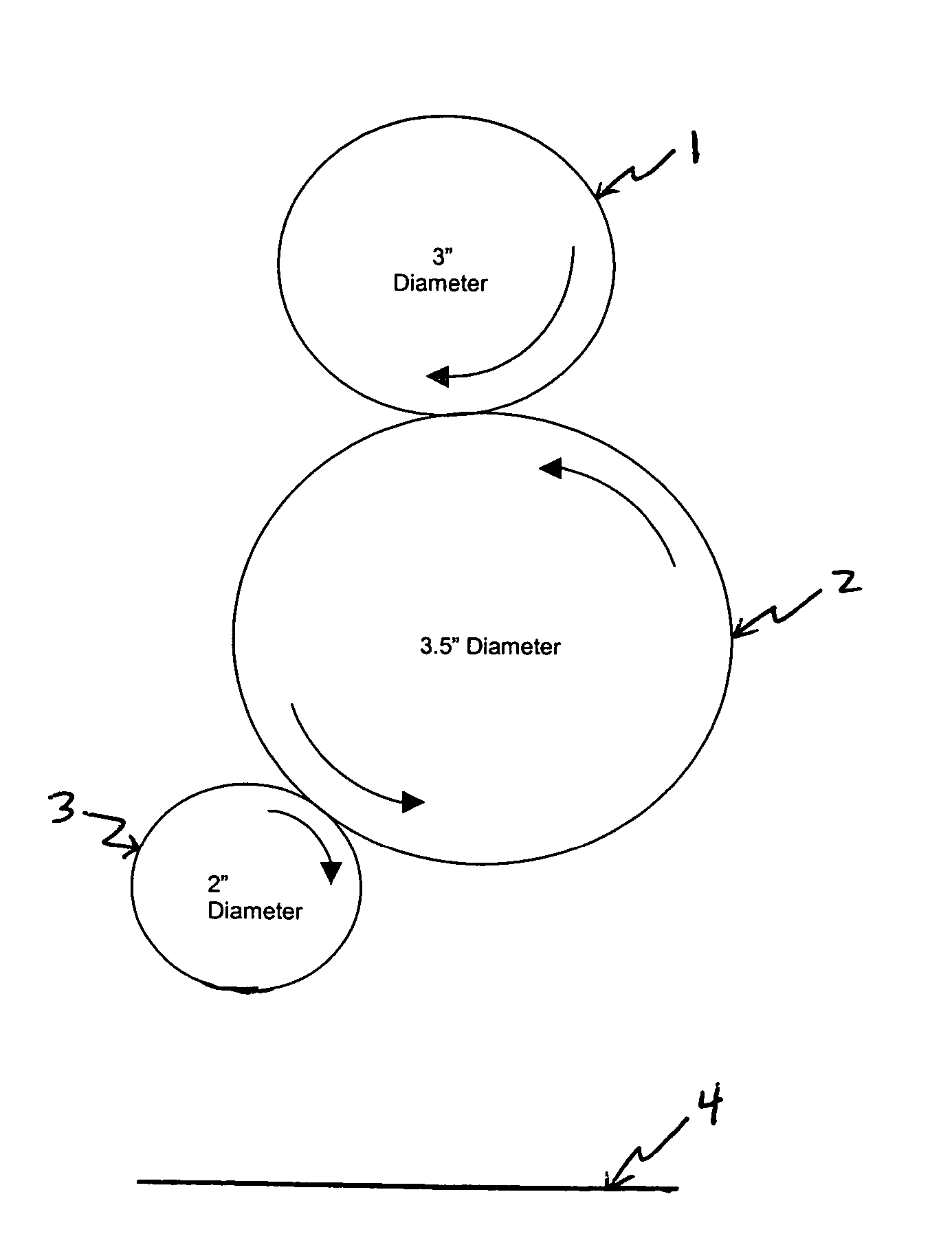Low misting laminating adhesives
a laminating adhesive and low misting technology, applied in the direction of adhesive types, transportation and packaging, synthetic resin layered products, etc., can solve the problems of unsatisfactory adhesive misting, incomplete adhesive transfer, and limited application speed of solvent- or water-based laminating adhesives, and achieve low misting, high functionality, and low functionality.
- Summary
- Abstract
- Description
- Claims
- Application Information
AI Technical Summary
Benefits of technology
Problems solved by technology
Method used
Image
Examples
examples
Component A-1
[0067]A blend containing 70% by weight of a TDI-based prepolymer obtained from Air Products (7.45% NCO) and 30% by weight of an MDI-based prepolymer obtained from Bayer Chemical Co. (22.9% NCO). Component A-1 has an NCO content of 12% by weight.
Component A-2
[0068]A blend containing 92% by weight of an MDI-based prepolymer (16% NCO) obtained from Bayer Chemical Co. and 8% by weight of an aliphatic prepolymer obtained from Bayer Chemical Co. (22% NCO). Component A-2 has NCO content of 17% by weight.
Component B-1
[0069]A blend containing 31.8% by weight of a tetrafunctional polyester polyol (TFPP-1), 51.8% by weight of a difunctional polyester polyol derived from diethylene glycol and ortho-phthalic acid (hydroxyl number=110) and 16.4% by weight of a difunctional polyester polyol derived from diethylene glycol and adipic acid (hydroxyl number=210). TFPP-1 has a hydroxyl number of 740 and is made by reacting two moles of glycerine with one mole of adipic acid.
Component B-2
[0...
PUM
| Property | Measurement | Unit |
|---|---|---|
| line speeds | aaaaa | aaaaa |
| room temperature | aaaaa | aaaaa |
| temperature | aaaaa | aaaaa |
Abstract
Description
Claims
Application Information
 Login to View More
Login to View More - R&D
- Intellectual Property
- Life Sciences
- Materials
- Tech Scout
- Unparalleled Data Quality
- Higher Quality Content
- 60% Fewer Hallucinations
Browse by: Latest US Patents, China's latest patents, Technical Efficacy Thesaurus, Application Domain, Technology Topic, Popular Technical Reports.
© 2025 PatSnap. All rights reserved.Legal|Privacy policy|Modern Slavery Act Transparency Statement|Sitemap|About US| Contact US: help@patsnap.com

